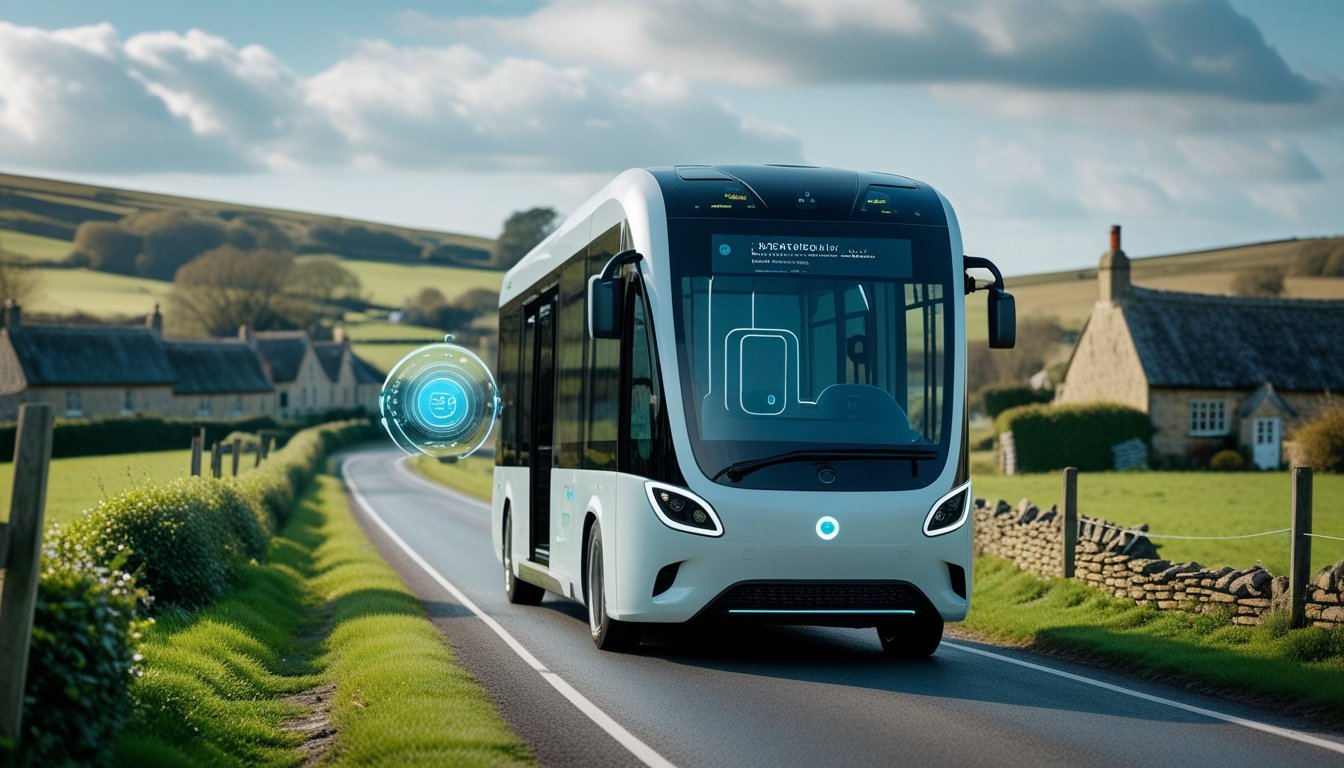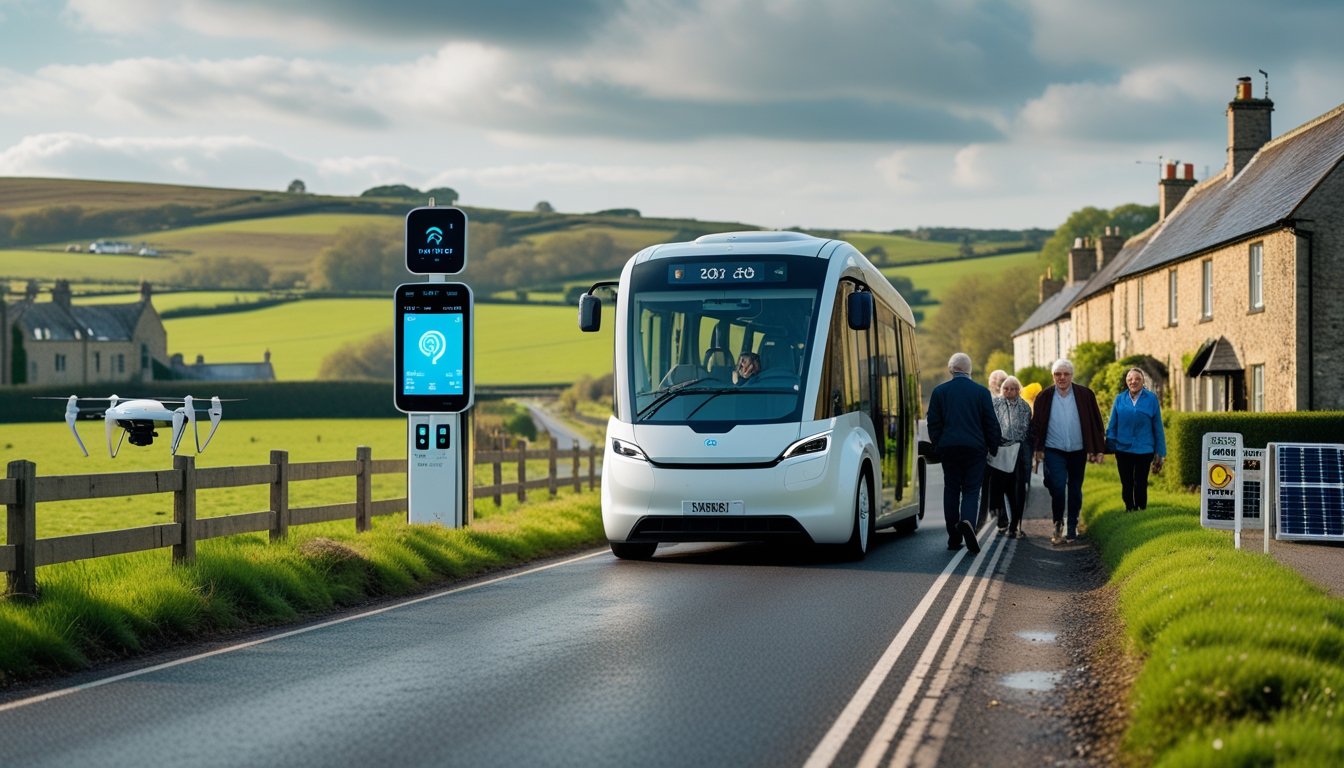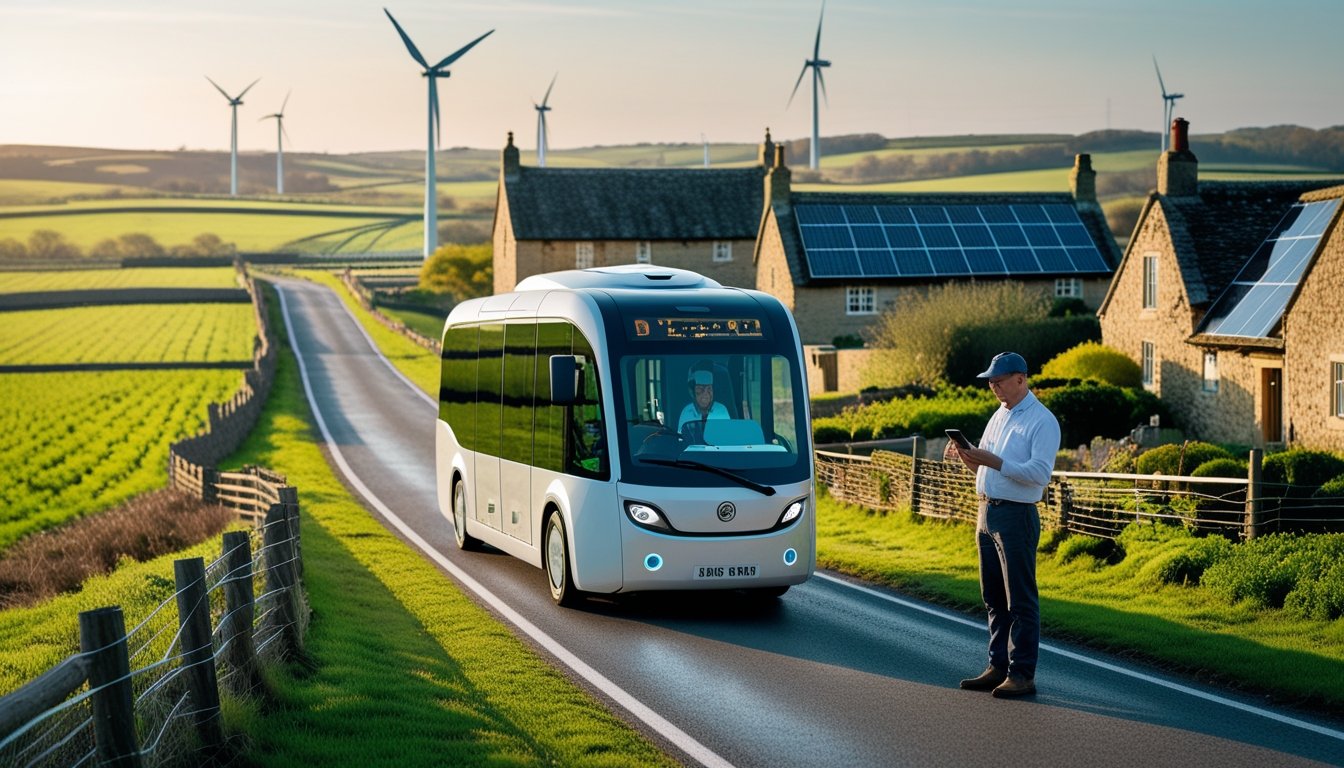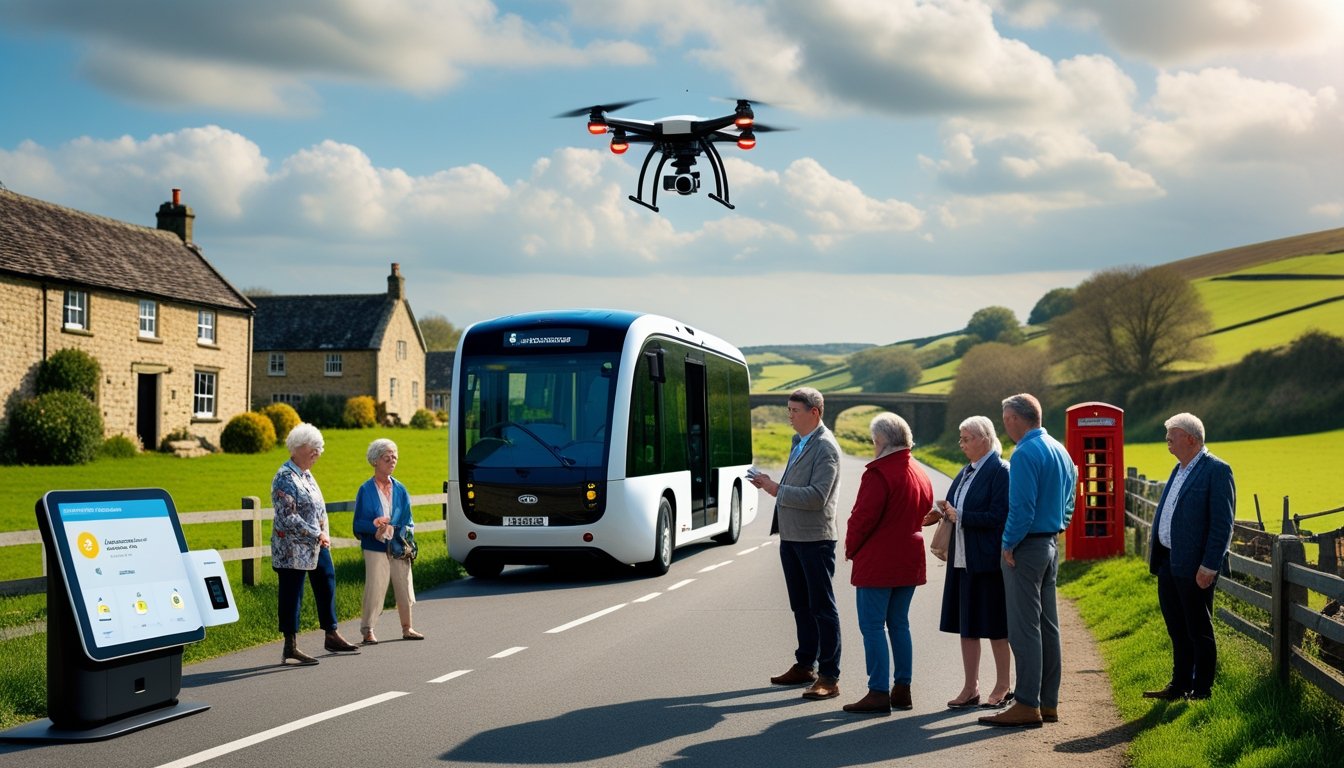Late updated: 13 Aug 2025 14:08
Written by: Oliver Bennett
AI-Driven Innovations In Rural UK Transportation: Transforming Connectivity
AI is transforming the way we think about rural transportation in the UK. Our villages and remote communities are often overlooked in terms of transport innovation, yet they present unique opportunities for data-driven technologies to enhance mobility. AI-driven advancements are paving the way for efficient, sustainable solutions tailored specifically for rural areas, addressing long-standing issues such as accessibility and connectivity.

In these regions, traditional public transport services can be sparse or infrequent, making access to employment, healthcare, and education challenging. By leveraging AI, we can facilitate smarter transport systems that adapt to real-time data, improve route efficiency, and provide personalised travel options. This transformative shift not only promises convenience but also aims to reduce the carbon footprint by optimising travel resources and routes through intelligent planning.
As we embark on this technological journey, it's essential for policy-makers, local authorities, and communities to collaborate closely. Embracing innovation can significantly improve the quality of life for rural dwellers, making it imperative for everyone involved to understand the potential and implications of these AI-driven solutions.
Key Takeaways
- AI offers tailored solutions for rural UK transport issues.
- Smart systems enhance accessibility and efficiency.
- Collaboration is key to implementing AI innovations.
Core AI-Driven Innovations in Rural UK Transportation

Artificial intelligence is radically transforming the way rural transportation operates across the UK. By enhancing infrastructure and optimising resource allocation, AI helps improve mobility efficiency and rural-urban integration. This digital transformation is essential for addressing the unique challenges faced by rural communities.
Smart Infrastructure and Connectivity Solutions
In rural areas, smart infrastructure is crucial for overcoming connectivity challenges. AI-driven solutions enable infrastructure improvements through the installation of sensors and data-collecting devices. These tools monitor road conditions, allowing maintenance teams to identify and address issues quickly. Additionally, AI algorithms enable traffic signals and lighting systems to optimise their operations for energy efficiency, aligning with sustainability goals. By integrating AI tools into existing infrastructure, we improve road safety and contribute to bridging the digital divide between urban and rural areas.
Data-Driven Transport Resource Allocation
AI adoption allows for precise resource allocation, crucial for improving rural transportation services. AI solutions analyse commuting patterns and demand data to efficiently allocate resources such as buses or shared transport facilities. This data-driven approach ensures that transport services are both economically viable and accessible to rural residents. The use of AI in resource allocation also fosters community engagement, as services are tailored to genuinely meet the needs of those living in less populated areas.
Predictive Analytics for Rural Mobility
Predictive analytics enhance rural mobility by anticipating demand and optimising transit operations. AI algorithms process historical data and real-time information to forecast transport needs. Anticipating peak times and potential disruptions allows service providers to adapt, minimising delays. This proactive approach not only improves service reliability but also elevates passenger experience. Predictive tools have become indispensable for aligning rural transport services with both immediate and future requirements.
AI-Enabled Rural-Urban Integration
AI-enabled solutions facilitate seamless rural-urban integration, addressing service gaps that often disadvantage rural communities. By creating ‘Uber for public transport’-style systems, we bridge connectivity gaps and offer flexible, on-demand transport options. AI-driven networks enhance access to urban amenities while supporting economic activities in rural regions. This integration helps achieve sustainability goals by reducing carbon emissions through shared transportation solutions, fostering an ecosystem conducive to both rural vitality and urban progress.
Sector-Specific Applications of AI in Rural Mobility

In rural UK transportation, AI plays a pivotal role in transforming various sectors. It enhances agricultural productivity, improves healthcare and emergency service access, streamlines logistical processes, and provides personalised educational resources through remote means. These applications demonstrate the diverse ways AI supports sustainable and efficient rural mobility.
Precision Agriculture and Agricultural Transport
AI revolutionises precision agriculture by helping farmers enhance productivity and reduce waste. Machine learning algorithms analyse data from drones and sensors to determine optimal planting and harvesting times. This technology supports agricultural transport by coordinating delivery routes and ensuring resources reach farms when they're needed.
Additionally, AI models optimise machinery usage, reducing costs and environmental impact. With AI-driven insights, farms can respond proactively to weather changes and pest threats, fostering sustainable practices. By integrating these technologies, rural agriculture evolves towards greater efficiency and self-reliance.
AI-Driven Healthcare and Emergency Services Access
Telemedicine powered by AI significantly improves healthcare access in remote areas. By identifying patterns and predicting health risks, AI ensures timely preventive care. Our communities benefit from AI algorithms that prioritise emergency service responses based on patient needs and location.
AI tools also maintain data privacy while processing sensitive health information. Moreover, remote diagnostics and AI-driven healthcare tools connect patients to specialists, ensuring quality care regardless of geographical barriers. This approach enhances healthcare delivery and ensures rural residents receive prompt and efficient services.
Smart Logistics, Delivery Drones, and Sensors
AI transforms logistics by optimising delivery routes and improving supply chain efficiency. In rural areas, drones facilitate quick delivery of essential goods, while sensors monitor road conditions to prevent delays. Machine learning enables predictive maintenance, reducing breakdowns and enhancing service reliability.
Our rural infrastructure benefits from smart logistics that reduce transportation costs and environmental footprint. AI ensures a seamless flow of goods, supporting economic growth. By integrating these technologies, rural areas can achieve efficient, reliable, and sustainable logistics systems, vital for community well-being and business success.
Personalised Education Access and Remote Tutoring
AI personalises education by accommodating diverse learning needs through remote tutoring platforms. In rural regions, where access to educational resources is limited, AI ensures students receive tailored instructions. Machine learning algorithms adapt content to individual learning styles, fostering effective study practices.
Friendly interfaces and interactive content maintain student engagement, while AI tools monitor progress and provide real-time feedback. This approach bridges educational gaps and prepares rural youth for the future. By embracing AI-powered education systems, we can nurture talent and expand opportunities, ensuring rural populations thrive in a rapidly changing world.
Frequently Asked Questions

AI-driven innovations in rural UK transportation aim to enhance access and efficiency. These technologies are reshaping connectivity, introducing self-driving solutions, and leveraging data to optimise operations. Despite their benefits, challenges persist, particularly in infrastructure integration and sustainability efforts.
How is artificial intelligence improving access to transport in rural areas of the UK?
Artificial intelligence augments access by facilitating the integration of smart transportation solutions. This enables seamless connectivity between rural and urban areas. By predicting demand and optimising routes, AI helps deliver more efficient, responsive services that broaden access to essential amenities for rural residents.
What advancements in autonomous vehicle technology are being implemented in the UK countryside?
In rural UK areas, autonomous vehicles are beginning to make their mark through pilot programs and testing zones. These vehicles aim to enhance connectivity by providing on-demand services that adapt to varying demand patterns. Progress in sensor technology and machine learning ensures improved navigation on complex rural routes.
In what ways are data analytics being used to optimise rural transport routes and schedules?
Data analytics play a crucial role in streamlining rural transport operations. By analysing travel patterns and real-time traffic conditions, AI systems can identify the most efficient routes and adapt schedules accordingly. This optimises vehicle use, reduces waiting times, and improves the reliability of rural transportation networks.
What challenges are being faced when integrating AI into rural transport infrastructure in the UK?
A key challenge is the need for infrastructural upgrades to support new technologies. Limited digital connectivity and budget constraints can slow AI adoption. Additionally, AI solutions must be tailored to rural needs, considering diverse geographical conditions and lower population densities, compared to urban settings.
How is AI contributing to the sustainability of rural transportation in the United Kingdom?
AI aids in enhancing sustainability by minimising fuel consumption through route optimisation and predictive maintenance. Smart technologies also support carpooling and resource sharing, reducing the number of vehicles on the road. This contributes to lower emissions and supports the UK's goals for more sustainable transport systems.
What are the potential economic impacts of AI-powered transport solutions on rural communities?
The economic impact of AI in rural transport is promising. Improved connectivity enhances access to markets and employment opportunities, boosting local economies. AI-driven efficiencies can reduce operational costs, providing savings that benefit both service providers and users. Such innovations can stimulate investment and development in rural communities.
